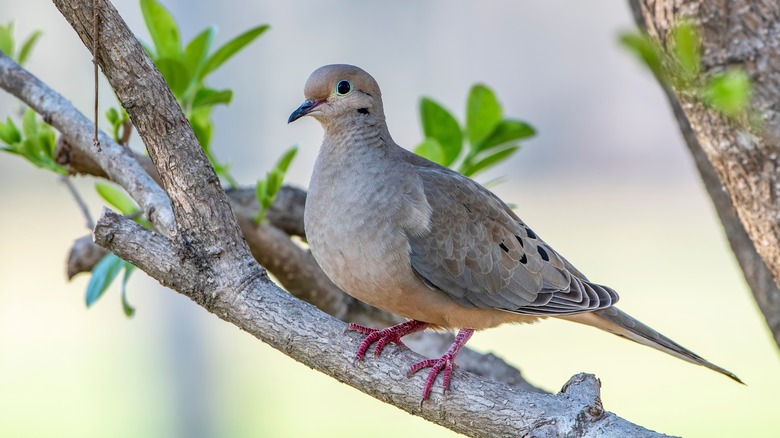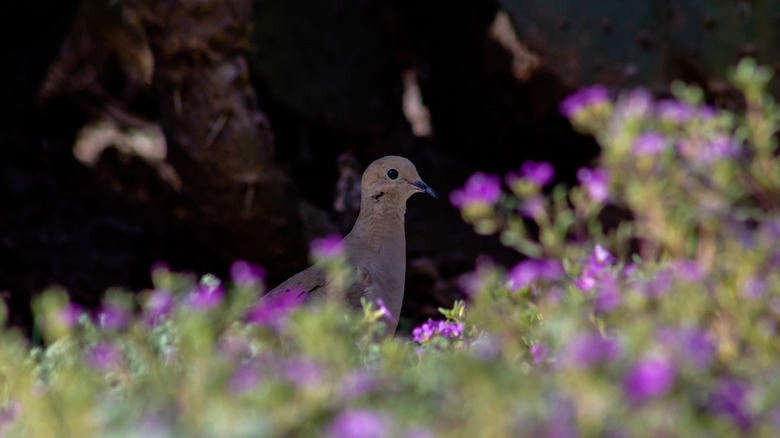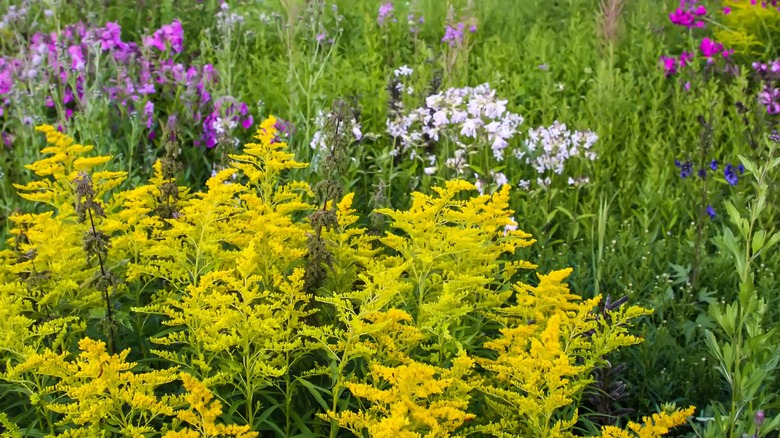This Flower Will Add A Golden Glow To Your Yard While Attracting Mourning Doves
Mourning doves, with a haunting and mournful call, are one of the most beautiful common birds native to North America. These gorgeous feathered friends undoubtedly add a magical and tender element to any garden or wild space. Attracting them naturally is super easy with a fabulous native wildflower. Goldenrod is a stunning wildflower that can be found all over North America. Unfortunately, goldenrod has been (incorrectly) given a bad reputation based on false information. Goldenrod has long been on the receiving end of criticism and unwarranted distaste due to its confusion with the common allergy-inducing ragweed. When most people think of goldenrod, their mind immediately goes to runny noses, coughs, and sneezes. The actual culprit of most fall allergies is, in fact, ragweed, an entirely different plant with more prolific pollen. It doesn't help that both plants bloom around the same time, furthering this false narrative.
Goldenrod flowers are a feast for mourning doves. Their diet, which is almost 99% seeds, is well catered to by goldenrod, which produces an impressive 3,000 seeds per plant! But the benefits of goldenrod extend beyond feeding birds. This vibrant, golden flowering plant is a beacon for all kinds of native pollinators and butterflies, making it a must-have addition to any home garden.
The importance of planting native plants to attract mourning doves
Native plants like goldenrod have evolved alongside other native flora and fauna for thousands of years. Furthermore, our native bird species have highly sophisticated and established relationships with our native ecology. So, when we plant the ancestral food of mourning doves, like goldenrod and other plants, we are providing more of the natural food and habitat that they've evolved to eat, thus attracting them to our yards organically. These native species help avoid the downsides of birdfeeders, such as the ethics of feeding wild animals, collisions, GMO bird feed, spreading disease, and attracting unwanted visitors.
An excellent alternative to using bird feeders is planting native plants! Not only are you providing food for local pollinators and birds, but you are helping to compensate for the effects of overdevelopment and urban sprawl, which has damaged our natural habitats. Most plants available in commercial nurseries are exotic, meaning they're imported from far-reaching places in the world and provide little to no benefit to our native ecosystems and wildlife. These plants are often toted as pest-resistant because none of our native insects feed on them. However, native birds like mourning doves rely on insects to feed their young. So, when you provide natural food sources, you are preserving biodiversity and protecting native ecosystems.
How to plant goldenrod to attract mourning doves to your yard
Another benefit of native plants is that they are uniquely acclimated to your distinct region and biome, thus making them hardier, more resilient, and largely drought-tolerant. Goldenrod grows best in full sun, well-draining soil, in a garden full of greenery where its pop of golden yellow flowers can easily be spotted. With golden plumes of sunshine yellow flowers, and abuzz with a plethora of different pollinators and butterflies, this gorgeous wildflower has so much to offer.
Since one plant provides up to 3,000 seeds, plant as many of these beauties as you can to attract mourning doves to your yard. Goldenrod is a staple food source for these majestic, stunning birds, so planting a lot is sure to attract them. Because they provide so many seeds, it's important to know that they will likely reseed themselves all over your yard. As they come up, you can always move them to a more desirable place. But if you want more mourning doves in your yard, the more goldenrod, the better!


